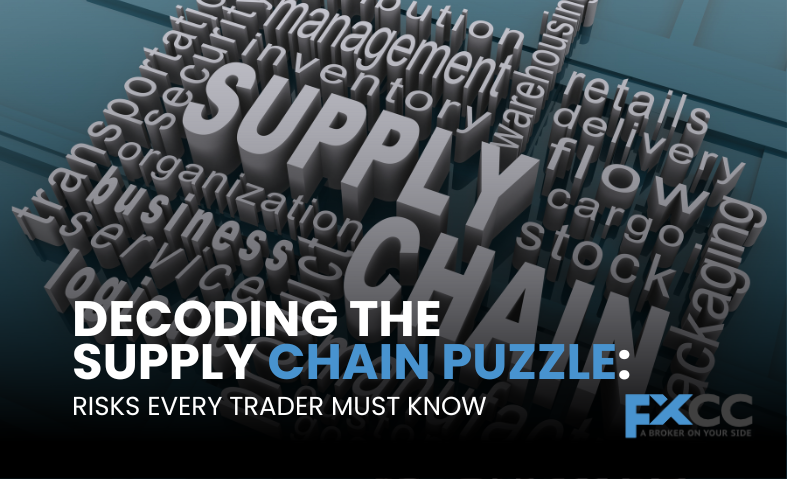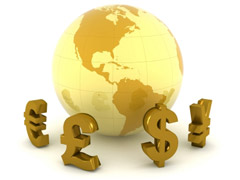The world of trading has evolved dramatically over the years, yet one constant remains: the importance of the supply chain. It’s the backbone of commerce, enabling goods to move seamlessly from producers to consumers. However, despite its critical role, the supply chain is fraught with risks that every trader must understand, staying competitive and resilient. Let’s unravel this complex puzzle and highlight the key risks traders face in supply chain management.

Understanding the Supply Chain and Its Significance
A supply chain is essentially the network that connects suppliers, manufacturers, distributors, and retailers to deliver products to end customers. Its efficiency directly impacts the cost, availability, and quality of goods. For traders, a robust supply chain can be a competitive advantage. However, it’s also a source of vulnerability, as disruptions at any stage can ripple through the entire system.
Globalization has made supply chains more intricate than ever. Goods often cross multiple borders before reaching their destination. While this complexity brings opportunities to tap into diverse markets, it also magnifies the risks, making it crucial for traders to anticipate and address potential pitfalls.
Major Risks in the Supply Chain
1. Geopolitical Instability
Political tensions, trade wars, and regulatory changes can wreak havoc on the supply chain. Sanctions, tariffs, or border closures can disrupt the flow of goods, forcing traders to seek alternative routes or suppliers. For instance, a sudden change in trade agreements can inflate costs or delay shipments, impacting profitability.
2. Natural Disasters
Floods, earthquakes, hurricanes, and other natural calamities can disrupt production and transportation networks. In recent years, climate change has exacerbated these risks, making them more unpredictable. A factory shutdown due to a flood in one part of the world can have a cascading effect, delaying orders and increasing costs for traders.
3. Supply Chain Bottlenecks
Congestion at ports, labor shortages, and infrastructure limitations are common bottlenecks. These delays can lead to stock shortages, frustrated customers, and lost revenue. For instance, the COVID-19 pandemic highlighted vulnerabilities in global supply chains, with container shortages and port congestion causing widespread disruptions.
4. Supplier Reliability
Suppliers play a pivotal role in the supply chain, but not all suppliers are equally reliable. Poor quality, inconsistent deliveries, or financial instability of suppliers can derail operations. Traders must vet their suppliers carefully and diversify their sources to minimize dependence on any single supplier.
5. Technological Failures
In today’s digital age, supply chains rely heavily on technology for tracking, inventory management, and communication. However, cyberattacks, software glitches, or outdated systems can compromise operations. A single ransomware attack can cripple an entire supply chain, leaving traders scrambling to recover.
How Traders Can Mitigate Supply Chain Risks
While risks are inevitable, proactive strategies can help traders minimize their impact. Building strong relationships with multiple suppliers is a start. Diversifying the supplier base reduces dependence on any single region or company, providing a safety net in times of crisis.
Embracing technology is another key step. Advanced supply chain management systems provide real-time visibility, enabling traders to identify and address potential disruptions before they escalate. Blockchain technology, for example, enhances transparency and traceability, building trust across the supply chain.
Furthermore, traders must invest in contingency planning. Scenario analysis and risk assessment can help identify vulnerabilities, allowing businesses to develop backup plans. Collaborating with logistics partners and maintaining safety stock are additional measures to ensure continuity.
The Human Factor in the Supply Chain
Amid the focus on technology and processes, it’s essential not to overlook the human element. Employees, partners, and stakeholders are the driving force behind any supply chain. Investing in training, fostering collaboration, and promoting open communication can significantly enhance resilience.

Final Thoughts
The supply chain may seem like a puzzle, but understanding its risks is the first step toward mastering it. For traders, the stakes are high, as a single disruption can have far-reaching consequences. By identifying potential threats and implementing robust strategies, traders can navigate this complex landscape with confidence.
In an ever-changing world, adaptability is key. Traders who stay informed, leverage technology, and build resilient networks will be well-equipped to overcome challenges and seize opportunities. After all, in the game of trading, success often hinges on how well you manage the unseen forces behind the scenes.


